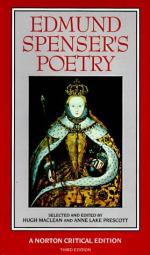|
This section contains 15,029 words (approx. 51 pages at 300 words per page) |

|
SOURCE: "Queen Elizabeth I: Representations of the Virgin Queen," in Renaissance Quarterly, Vol. XLIII, No. 1, Spring, 1990, pp. 30-74.
Below, King discusses the "Cult of the Virgin Queen " Elizabeth in art and literature, noting that this iconography reflects her virginity as a source of personal independence and political power.
It is commonly acknowledged that although Elizabeth I vowed herself to a life of perpetual virginity, she entered into a symbolic marriage with England as her husband.1 In this way she could receive the adulation of her subjects as the universal object of a Petrarchan religion of love, one that pervaded ballads, pageants, and dramatic entertainments. Scholars claim that she was able to convert her unprecedented weakness as a celibate queen into a powerful propagandistic claim that she sacrificed personal interests in the name of public service. Her maidenly chastity was therefore interpreted not as a sign of political or...
|
This section contains 15,029 words (approx. 51 pages at 300 words per page) |

|


